Misc
Explaining Cloverfield & It’s Weird, Chaotic Multiverse
The Cloverfield franchise has had a long, bizarre journey to being a big-name horror franchise. The J.J. Abrams-produced sci-fi horror film had its way to theaters paved by an especially strange and engaging ARG (alternate reality game); played through the internet, fans dove into a series of puzzling websites, hidden images, and in-universe promotional materials that told a twisted story of corporate conspiracy. At its center? Slushy drinks, kawaii mascots, satellite crashes, seabed-dwelling parasites, and of course, a 300-foot-tall aquatic monster fans would dub Clover.
With viral marketing on a whole other level, a simple kaiju movie wrapped in a found footage package became THE landmark horror film of 2008 and soon embedded itself into the hearts and minds of horror fans worldwide. It became so big in fact that the brand name eventually consumed other unrelated films: The Cellar, which was eventually retitled and rewritten to become 10 Cloverfield Lane, and God Particle, which eventually became The Cloverfield Paradox.
Cloverfield as a pop culture entity is an undeniable juggernaut with active fans still discussing it and its sequels to this day. But what brings together these three films, with a prospective fourth still in development? Today, we explain exactly what makes the Cloververse tick.

The Cloverfield franchise has had a long, bizarre journey to being a big-name horror franchise. The J.J. Abrams-produced sci-fi horror film had its way to theaters paved by an especially strange and engaging ARG (alternate reality game); played through the internet, fans dove into a series of puzzling websites, hidden images, and in-universe promotional materials that told a twisted story of corporate conspiracy. At its center? Slushy drinks, kawaii mascots, satellite crashes, seabed-dwelling parasites, and of course, a 300-foot-tall aquatic monster fans would dub Clover.
With viral marketing on a whole other level, a simple kaiju movie wrapped in a found footage package became THE landmark horror film of 2008 and soon embedded itself into the hearts and minds of horror fans worldwide. It became so big in fact that the brand name eventually consumed other unrelated films: The Cellar, which was eventually retitled and rewritten to become 10 Cloverfield Lane, and God Particle, which eventually became The Cloverfield Paradox.
Cloverfield as a pop culture entity is an undeniable juggernaut with active fans still discussing it and its sequels to this day. But what brings together these three films, with a prospective fourth still in development? Today, we explain exactly what makes the Cloververse tick.

WAIT, WHAT IS THE CLOVERVERSE?
The three different films of the Cloverfield franchise take place across 4 separate universes, with the multiverse at large being dubbed the Cloververse by fans back in 2016 with the release of 10 Cloverfield Lane.
The multiverse angle was only truly established in the third film, The Cloverfield Paradox; while Paradox explores astronauts trying to access infinite energy through a particle accelerator and messing up terribly, this inciting incident is the lynchpin that connects all three films.
A scene of a conspiracy theorist named Mark Stambler (a relative of that universe’s Howard Stambler from 10 Cloverfield Lane) on television elaborates that Clover, the aliens from Lane, and other creatures could be summoned by the ignition of the Shepard particle accelerator. When the fabric of space-time was ruptured by the accelerator firing off, it “unleashed chaos” and seemingly scattered horrific aliens across the multiverse.
Hence, Cloververse.
WHAT IS CLOVER?
A juvenile kaiju of an unknown species, Clover is the most notable of the monsters released by this event. Created by concept artist and creature designer Neville Page, Clover was described by director Matt Reeves and company as a frightened child that had been wrenched from its mother, causing it to rampage across the world after being woken up.
Dubbed the Large-Scale Aggressor by the U.S. government, the creature was an alien adapted for aquatic environments and could go for extended periods of dormancy at the bottom of the ocean. It carried on its body thousands of aggressive, dog-sized parasites, which only compounded the damages done to New York by Clover’s attack.
It was also effectively unkillable, surviving everything thrown at it, including the Hammerdown Protocol bombing that ended the first film. A subtle message in the end credits reveals that the creature is still alive, and quite possibly grew into a similar giant monster seen at the end of The Cloverfield Paradox.

WHERE DID CLOVER COME FROM?
A long-time debate among Cloverfield fans was spurred by exactly this question, and by the final scene of the film which shows an object falling into the Atlantic Ocean. The ARG and J.J. Abrams’s own answers suggest the object is a satellite, but director Matt Reeves seems to believe this is the monster. Most disagree with Reeves because the ARG goes to lengths to explain the timeline of events leading up to Clover’s attack on New York, which just doesn’t work if it is Clover.
Without getting lost in the weeds of exact dates, the ARG details that a Japanese satellite known as the Chimpanzee III crashed into the Atlantic Ocean under mysterious circumstances, a portion of which ended up off the coast of New York (which we see in the final moments of the film). Tagruato, a shadowy transnational corporation with concerted interests in deep sea drilling, went on the hunt for the rest of the satellite and discovered a dormant Clover. An oil drilling station was established over the creature’s location as a coverup, and Tagruato experimentation at that drill site eventually woke it up.
In short: Clover was torn into the universe by the Shepard accelerator, went dormant at the bottom of the ocean, was woken up by Tagruato, and then subsequently went on a rampage.
WHAT WOKE UP CLOVER?
Among the many Tagruato subsidiaries, none was as popular as Slusho!, a drink company that was quickly becoming the most popular beverage in the world. A big part of the ARG is a series of video messages and emails detailing the titular soft drink was made with an addictive chemical compound called Seabed’s Nectar. Seabed’s Nectar was toxic when consumed in its raw form as seen in the Jamie videos of the ARG, causing hallucinations and eventually death in humans after continued consumption.
The Special Investigation commentary on the home release of Cloverfield revealed that the thousands of Parasites that landed in New York City with Clover all had high levels of Seabed’s Nectar in their blood. The Parasites, Clover, or both were the source of Seabed’s Nectar, and Tagruato’s misguided attempts to extract and farm it from the creatures woke it up.
Still, kind of thirsty for some Slusho.

ARE THE ALIENS FROM 10 CLOVERFIELD LANE RELATED TO CLOVER?
Probably not. Chances are they’re just one of many threats caused by a misguided attempt to harness infinite energy. J.J. Abram’s has said in the past that he’s hoping for the Cloverfield series to end up as more of an anthology than anything else, so there’s no telling where the story goes from here. I’m just hoping we get either the return of the parasites or some nasty new monster designs.
***
And that will be it for today’s Horror 101 lesson. See you in the next class and stay tuned to Horror Press’s social media feeds for more content on horror movies, television, and everything in between!
Misc
Our Halloween Giveaway Is Here!
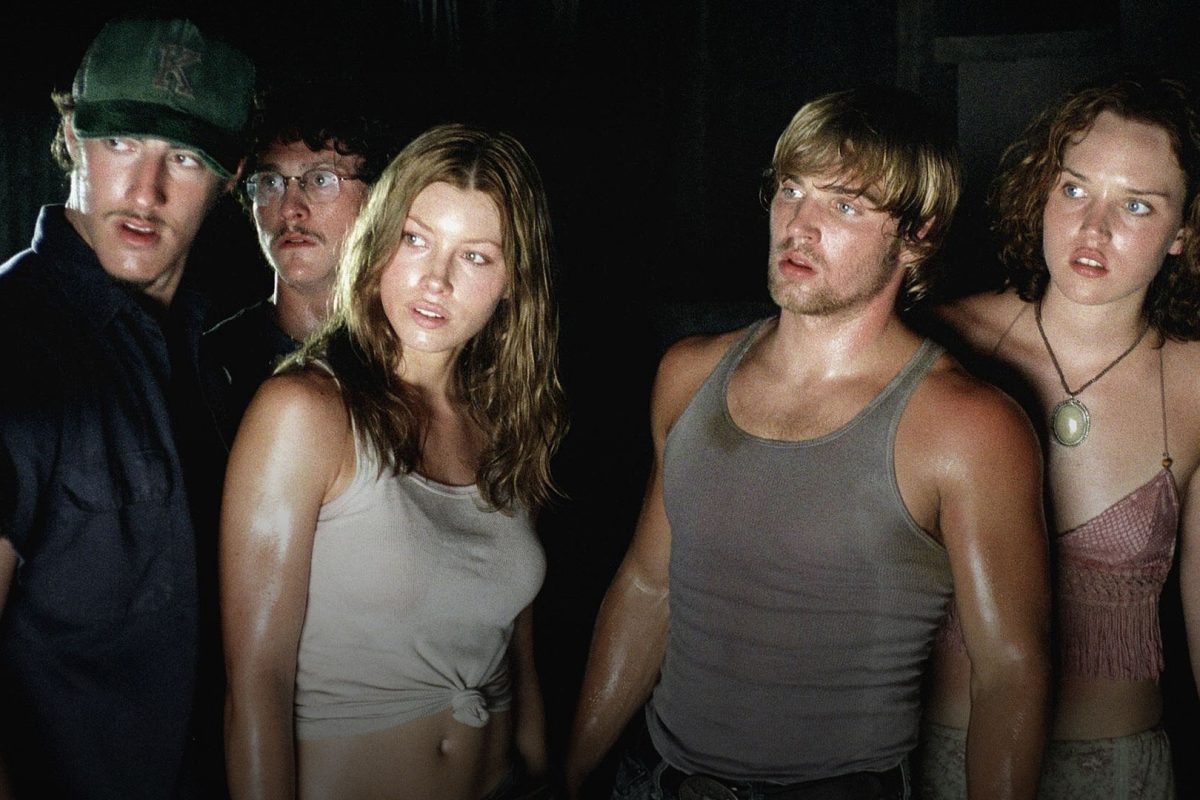
Enter Our Halloween Giveaway!
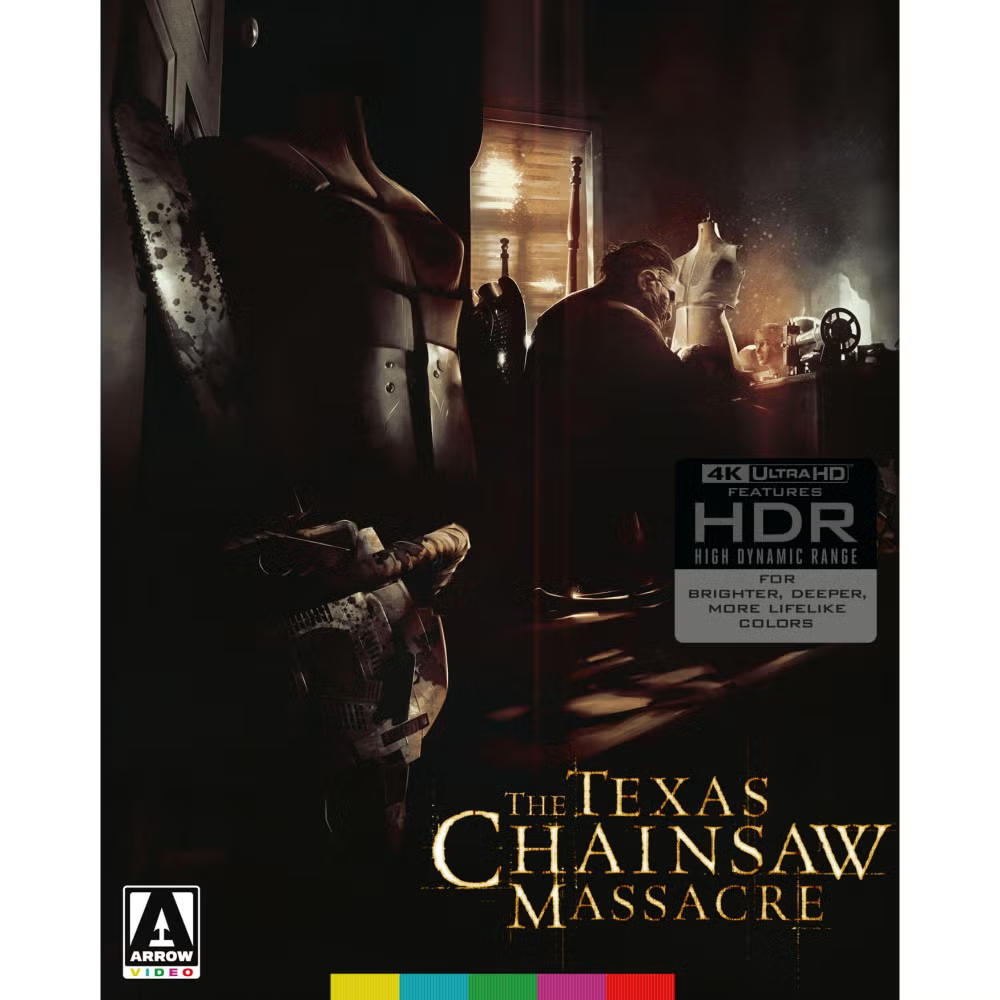
How to Enter:
Step 1. Make sure to FOLLOW US ON FACEBOOK AND JOIN OUR FACEBOOK GROUP!
Step 2. LIKE AND SHARE the giveaway post!
Step 3. This is the most important step, email us at contact@horrorpress.com with your FULL Facebook name (so we can verify you’re in the group) and who your favorite character is from the Texas Chainsaw franchise.
**Giveaway entries are limited to addresses in the United States.**
**All entries must be 18 or older to enter**
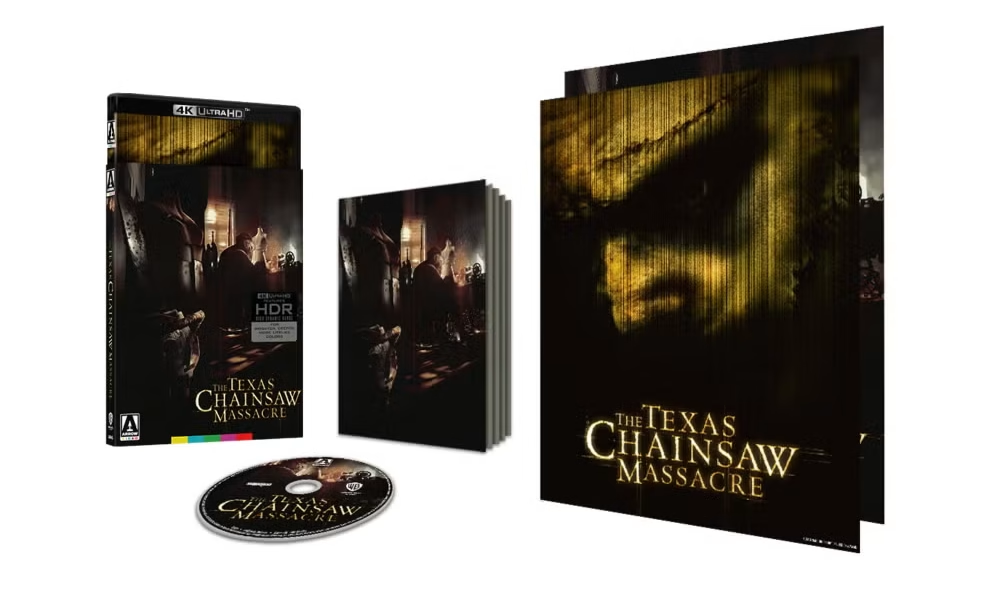
What You’ll Win
The Texas Chainsaw Massacre (2003) Limited Edition 4K UHD from Arrow Video
- 4K (2160p) Ultra HD Blu-ray presentation in Dolby Vision (HDR10 compatible)
- Original DTS-HD MA 7.1 and 5.1 surround audio and lossless stereo audio
- Optional English subtitles for the deaf and hard of hearing
- Brand new audio commentary with Dread Central co-founder Steve “Uncle Creepy” Barton and co-host of The Spooky Picture Show podcast Chris MacGibbon
- Archival audio commentary with director Marcus Nispel, producer Michael Bay, executive producers Brad Fuller and Andrew Form and New Line Cinema founder Robert Shaye
- Archival audio commentary with Marcus Nispel, director of photography Daniel Pearl, production designer Greg Blair, art director Scott Gallager, sound supervisor Trevor Jolly and composer Steve Jablonsky
- Archival audio commentary with Marcus Nispel, Michael Bay, writer Scott Kosar, Brad Fuller, Andrew Form and actors Jessica Biel, Erica Leerhsen, Eric Balfour Jonathan Tucker, Mike Vogel and Andrew Bryniarski
- Reimagining a Classic, a brand new interview with director Marcus Nispel
- Shadows of Yesteryear, a brand new interview with cinematographer Daniel Pearl
- The Lost Leatherface, a brand new interview with actor Brett Wagner
- Masks and Massacres, a brand new interview with makeup effects artist Scott Stoddard
- Chainsaw Symphony, a brand new interview with composer Steve Jablonsky
- Chainsaw Redux: Making A Massacre, a making-of documentary
- Ed Gein: The Ghoul of Plainfield, an in-depth look at the infamous killer who inspired the character of Leatherface
- Severed Parts, a look at the cutting room floor and some of the scenes excised from the final edit
- Deleted scenes including an alternate opening and ending
- Screen tests for Jessica Biel, Eric Balfour and Erica Leerhsen
- Behind-the-scenes featurette
- Cast and crew interviews
- Theatrical trailers and TV spots
- Concept art galleries
- Reversible sleeve featuring original and newly commissioned artwork by Aaron Lea
- Double-sided foldout poster featuring original and newly commissioned artwork by Aaron Lea
- Illustrated collector’s booklet featuring new writing on the film by Michael Gingold
Misc
NYCC 2025 Horror Highlights: A Sneak Peek at ‘The Lost Boys’ Musical, ‘Resident Evil: Requiem,’ and More!
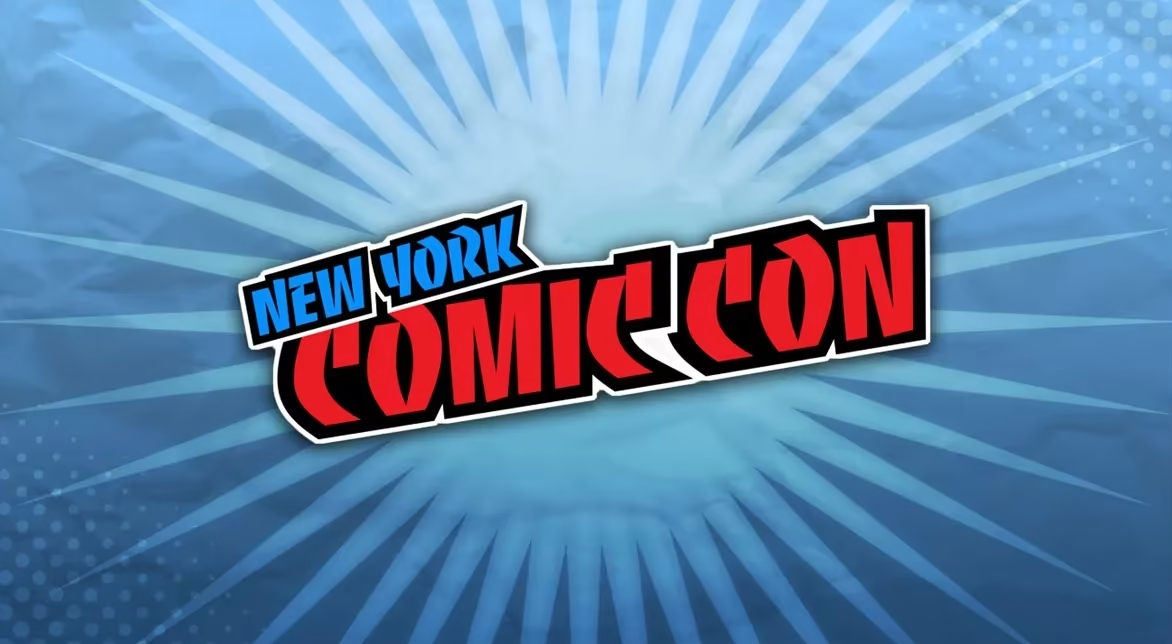
As soon as New York Comic Con announced that its 2025 theme would be “haunted,” I started lacing up my comfy shoes and making a beeline for the Javitz Center! Horror has always been represented at the con, but it felt fitting that it should play a central role in this year’s event at a time when the genre seems more popular than ever.
From beloved family-friendly properties like The Nightmare Before Christmas to pants-dampening titles like the upcoming Resident Evil: Requiem, horror appeared in countless shapes and forms. Here are all the best and scariest insights I gleaned from the show floor, panel rooms, and pop-ups of New York Comic Con 2025!
Our NYCC 2025 Horror Highlights
Resident Evil: Requiem Is Going to Test Your Bladder Strength
Full disclaimer: I’m not a gamer. I’m honestly pretty bad at games, which made my Resident Evil: Requiem play session all the more frightening because I was convinced that everyone around me would realize I’m a fraud. But with easy-to-grasp controls, even for a newb like me, the latest installment in the iconic horror franchise quickly sucked me in and left me on edge for entirely different reasons.
During my 30-minute session, I was introduced to FBI analyst Grace Ashcroft, Requiem’s central character. She swims to consciousness to find herself strapped upside down on a gurney with a needle in her arm, siphoning her blood. After Grace managed to free herself, the controls were handed over to me to explore the creepy facility through Grace’s eyes, looking for a fuse. Some spaces were bathed in red light; others were lit only by flickering bulbs that left me white-knuckling the controller, waiting for something to emerge from the shadows and swallow me whole, not helped by Grace’s anxious, stuttering breathing in my ear.
I took a moment to appreciate how detailed video games have become since my childhood experiences playing Evil Dead: Hail to the King on the original PlayStation (seriously, you can see the dust drifting in beams of light now?!), only for the sound of movement somewhere in the facility to yank me back to the present. I renewed my frantic search for the fuse, only to run blindly into a pitch-black room and encounter something enormous that dragged me into the darkness. Sorry, Grace!
You can find out what happens next when Resident Evil: Requiem releases for the PlayStation 5, Xbox Series X|S, PC, and Nintendo Switch 2 on February 27, 2026.
Megan Fox Is Among the New Cast Members in Five Nights at Freddy’s 2—And Blumhouse Hasn’t Given Up on Its Other m3gan Yet
Blumhouse made several announcements at their NYCC panel, most notably that Megan Fox (Jennifer’s Body) is voicing Toy Chica in director Emma Tammi’s highly anticipated sequel Five Nights at Freddy’s 2, coming to theaters on December 5. Other new additions to the cast include YouTuber Matthew Patrick, aka MatPat, who cameoed in the first movie and will voice Toy Bonnie, and Kellen Goff, who has voiced multiple characters in the game series and will now lend his pipes to Toy Freddy.
I’m interested in Five Nights at Freddy’s 2, not least because my best friend is terrified of the franchise and makes a wildly entertaining moviegoing companion—but I’m more interested in the future of another Blumhouse franchise, M3GAN. After the sequel underperformed, likely due in part to its hard genre pivot away from horror and into action territory, the future of the killer doll is uncertain. But in a special industry presentation on “The Business of Fear,” Jason Blum revealed that “we’re all working to keep M3GAN alive,” adding that Blumhouse is exploring other potential mediums before trying to resurrect her on film.
Does that mean a M3GAN video game might come our way in the future, or perhaps a TV series? I don’t know, but I have a feeling this isn’t the last we’ve seen of the silicone diva.
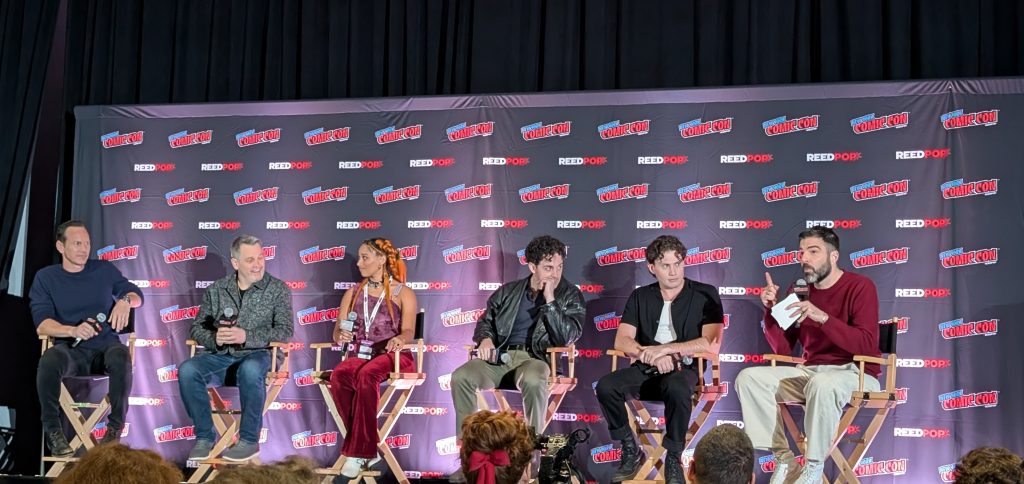
Photo taken by Samantha McLaren.
The Lost Boys: A New Musical Will Feature Flying Stunts and a Live Vampire Band
My queer heart is a sucker for musical adaptations of horror films I love, so you can be certain that I’ll be heading down to the Santa Carla Boulevard—aka Broadway’s Palace Theater—for The Lost Boys: A New Musical, which begins previews on March 27, 2026. At their NYCC panel, producer Patrick Wilson (The Conjuring franchise), director Michael Arden (Maybe Happy Ending), and cast members LJ Benet, Ali Louis Bourzgui, and Maria Wirries revealed why they feel Joel Schumacher’s 1987 classic translates so well to the stage, and what audiences can look forward to.
“There’s something that I see with both horror movies, musicals, and superhero movies—there’s an element of melodrama that’s really rewarding,” says Wilson, who began his career in musical theater and worked with Schumacher on the director’s 2004 film adaptation of The Phantom of the Opera. “Some people view it as camp, but there’s a reality of it being heightened that felt like this story cemented itself so much to being a musical.”
“They’re a biker gang, after all, and there’s a level of theatricality to that in and of itself,” says Arden. “Our biker gang also happens to play instruments.”
That’s right: the vampires will be playing instruments live on stage, which made casting twice as hard. Ali Louis Bourzgui, who plays David, the character portrayed by Kiefer Sutherland in the film, reveals that he plays guitar. And that wasn’t the only unusual request in the casting call: auditions included a flying test. (Presumably wires were involved, unless Arden has found himself a real cabal of vampires in his cast.)
Other highlights that fans can look forward to include killer music from one of Arden’s favorite bands, The Rescues. You can listen to the song “Have to Have You” right now, featuring instrumentals from Slash. The director also teases that many fan-favorite moments from the film will feature in some way in the musical, including the bridge scene and, yes, even the sexy saxophone guy.
Greg Nicotero’s Guts & Glory Marks a New Challenge for a Legend of the Business
If you like looking at gnarly practical effects in horror movies, chances are you’re familiar with Greg Nicotero’s work, whether you realize it or not. The legendary SFX artist has worked on everything from George Romero’s Day of the Dead and Sam Raimi’s Evil Dead II to Kill Bill and, more recently, The Walking Dead. The impressive extent of his resume was made clear at the panel “Shudder is Here to Scare the S*** Out of You,” in which almost any film mentioned by the other panelists was met by a small smile and a humble murmur of “worked on that” into the mic, often followed by a wild anecdote. Nicotero seems like the most interesting man in the world to grab a drink with, and his new horror competition show for Shudder—Guts & Glory—will let us see more of the man behind the makeup brush.
“Guts & Glory is one of the most fun times I’ve had on a show,” Nicotero says, teasing that the series is “part Sam Raimi, part Halloween Horror Nights, and part Survivor.”
In the six-episode first season, contestants are dropped into an Alabama swamp, where there’s an urban legend about an evil spirit. “One of the contestants gets possessed by the evil spirit, people start dying off, but in the meantime, they’re still competing and there’s a prize,” Nicotero explains.
Guts & Glory is effects-heavy, which was challenging to do in an unscripted series relying on real people’s real-time reactions. “You do a movie, you can cut and try it again,” Nicotero explains. “[This] was completely out of my wheelhouse and out of my comfort zone, but I’m really, really proud of it.”
Nicotero’s Creepshow was one of the first original shows to debut on Shudder, so he’s truly part of the DNA of the horror streamer, which celebrated its 10th anniversary this year. Guts & Glory premieres on October 14 as part of Shudder’s Season of Screams programming.
Horror Short The Littles Deserves the Big-Screen Feature Treatment
Some short films are perfectly suited to their bite-sized format, while others contain the seeds of something much bigger. At the New York Premiere of The Littles, a new short written and directed by American Horror Story producer Andrew Duplessie, I could immediately see the potential for the feature film that Duplessie hopes to make.
Equal parts charming and unsettling, The Littles stars M3GAN’s Violet McGraw as a little girl with a loose floorboard in her bedroom. One night, a scuffling sound and a crack of light between the boards lead the little girl to discover that her family isn’t alone in the house…
Duplessie says The Littles was inspired by his own experiences growing up in a creaky old house with a no-doubt overactive imagination. The short features creepy-cute stop-motion animation from Anthony Scott (The Nightmare Before Christmas), puppets by Katy Strutz (Guillermo del Toro’s Pinocchio), and some truly adorable miniature sets by Aiden Creates, all blended perfectly with the live-action scenes. Check it out if it’s playing at a festival near you, and watch this space for a (fingers-crossed) future feature!
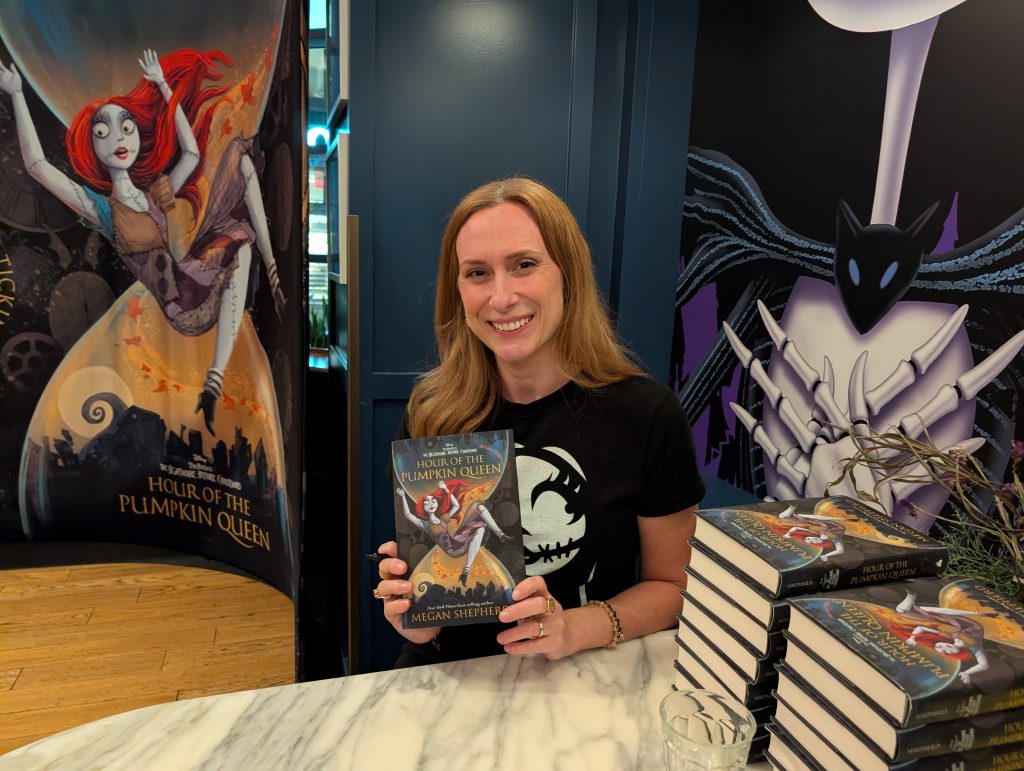
Photo taken by Samantha McLaren.
Disney Publishing’s New The Nightmare Before Christmas Tie-in Novel Welcomes Younger Fans into the Scary Fun
NYCC’s horror happenings weren’t all geared toward an adult audience. Disney Publishing took over Daily Provisions Manhattan West for a pop-up experience inspired by The Nightmare Before Christmas, featuring themed food and drinks like a delectable Pumpkin Potion coffee that I could honestly drink all season long.
At a media and creator event in the space, I took a look at the newly released Hour of the Pumpkin Queen from New York Times best-selling author Megan Shepherd, who also wrote the official novelization of The Nightmare Before Christmas for the film’s 30th anniversary in 2023. In this new tie-in novel, Sally and her rag doll apprentice, Luna, embark on a time-bending adventure to save Jack Skellington and Halloween Town after falling through a mysterious portal.
I was gifted a copy of the book by Disney, but all opinions are my own here. I’m looking forward to giving it a read during the inevitable Halloween hangover that takes place in November, before likely passing it on to my young nieces when they’re old enough. It’s a full novel, not a picture book, so definitely geared more toward a YA audience, but between the beautiful artwork on the cover and the seasonal theme, it might just be the perfect gift for the budding horror lover in your life.
That’s a wrap on New York Comic Con 2025! Be sure to bookmark Horror Press if you haven’t already so you never miss our coverage of conventions, festivals, and more.

























